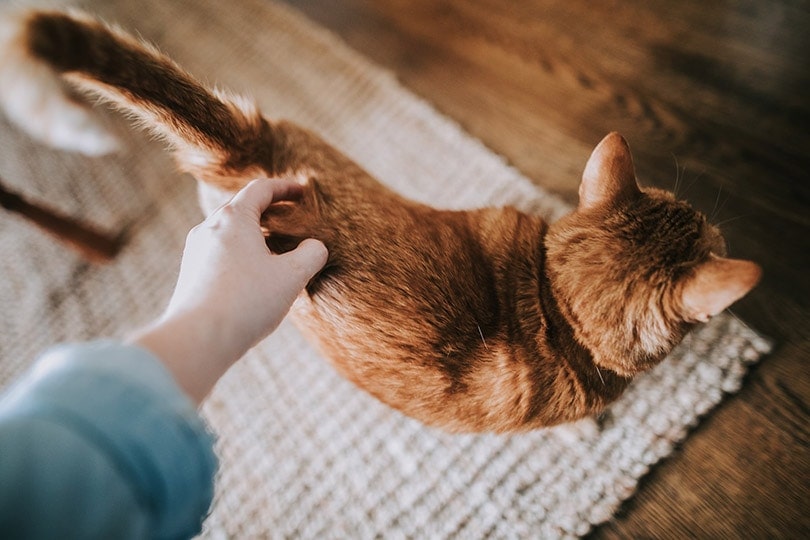Cats are known for their unique behaviors, and one of the most fascinating is when they raise their butts when scratched or petted.
While this behavior can be confusing to pet owners, it actually has a lot to do with feline body language and communication.
Understanding why cats do this can help owners better understand their pets and improve their relationship.
Why Do Cats Raise Their Butts When Scratched?
When a cat raises their butt when scratched, they’re actually showing their trust and affection towards the person doing the scratching.
This behavior is related to the scent glands located on a cat’s tail and around their anus.
When a cat raises their butt, they’re actually presenting these scent glands for the person to smell, which is a sign of trust and familiarity.
It’s also a way for the cat to mark their territory and communicate with other cats.
Another reason why cats raise their butts when scratched is that it feels good to them. Scratching or rubbing certain areas of their body can stimulate their pleasure centers, which can make them feel relaxed and happy.
When a cat raises their butt, they’re exposing a sensitive area that feels good to be scratched or rubbed.
Understanding Cat Body Language
Cats use body language to communicate with each other and with humans. By observing their body language, we can gain insight into their emotions and intentions. Some common feline body language includes:
- Tail position: A cat’s tail can indicate their mood. A straight, stiff tail can indicate aggression, while a relaxed tail indicates contentment. A puffed-up tail indicates fear or aggression.
- Purring: Cats purr when they’re happy, but they can also purr when they’re nervous or in pain.
- Ears: A cat’s ears can indicate their mood. Flat ears indicate fear or aggression, while perked-up ears indicate interest or excitement.
- Body position: The way a cat holds their body can indicate their mood. A relaxed, open body position indicates contentment, while a tense or crouched position indicates fear or aggression.
Other Feline Behaviors
In addition to raising their butts when scratched, cats display a variety of other behaviors that can indicate their mood and intentions. Some common feline behaviors include:
- Kneading: Cats knead with their paws when they’re feeling happy and content. This behavior is related to when they were kittens and would knead their mother’s belly to stimulate milk production.
- Purring: Cats purr when they’re happy, but they can also purr when they’re nervous or in pain. It’s a way for them to self-soothe and communicate with their surroundings.
- Hissing: When a cat feels threatened or scared, they may hiss as a warning to their aggressor. It’s a way for them to communicate that they’re not happy with the situation.
- Tail twitching: A cat’s tail may twitch when they’re feeling excited or playful, but it can also indicate annoyance or aggression.
Conclusion
Understanding feline body language and behaviors is an important part of being a cat owner. When we can interpret their signals and respond appropriately, we can strengthen our bond with our pets and create a happier, healthier relationship.
The next time your cat raises their butt when you scratch them, remember that it’s a sign of trust and affection, and enjoy the bonding moment with your feline friend.
FAQs
Exploring Why is My Cat So Affectionate in The Morning? Read our blog!
Follow Embora Cats on Google News!
Recommended:
Share this article:

